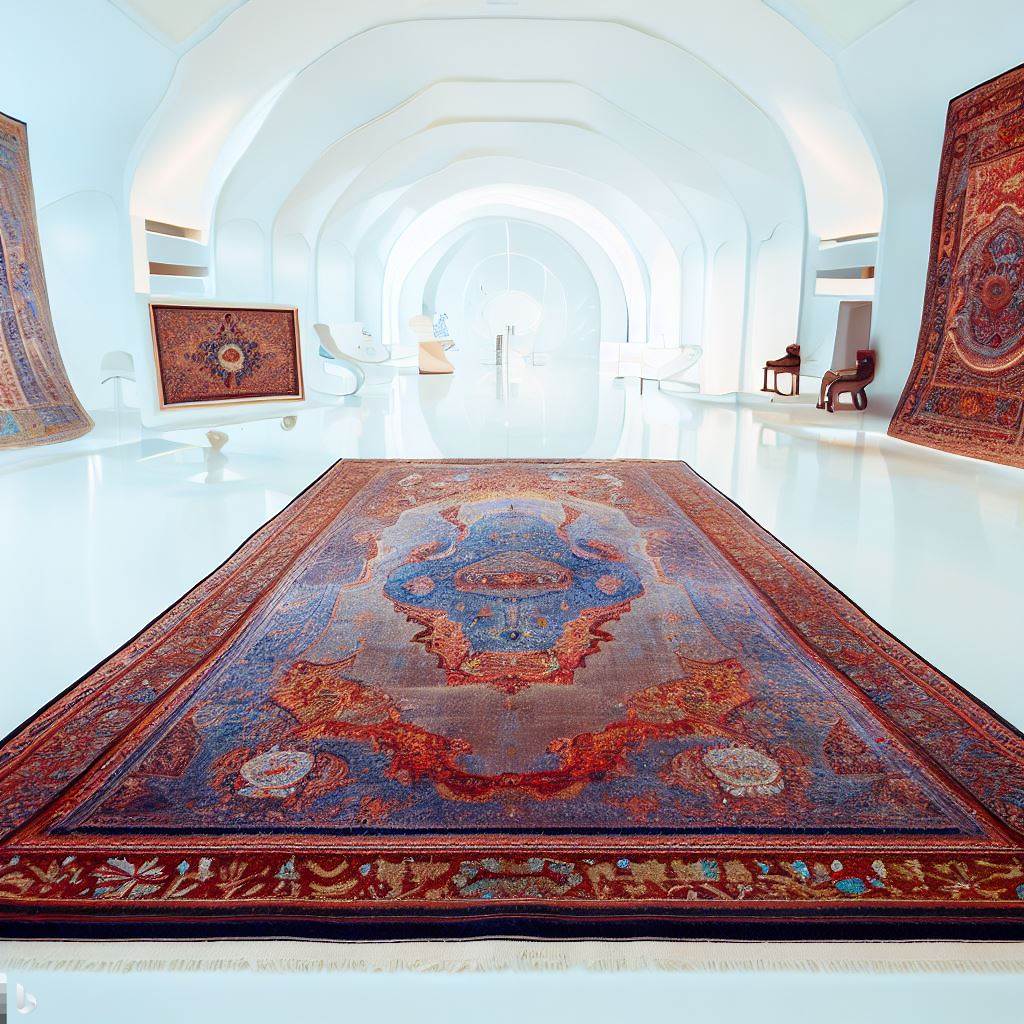The Art of Rug Weaving Demystified: Debunking Common Myths
Rug Weaving is Not Just a Historical Craft
A common misperception holds that handwoven rugs mainly belong to the past. In truth, rug making remains a thriving art form adapting across generations.
Contemporary weavers worldwide keep techniques alive through fresh iterations inspired by current aesthetics. New materials like carved foam and solar dyeing push boundaries. Digital media gets woven into interactive pieces.
Far from dusty relics, heirloom methods flourish alongside innovative experimentation. Blending old and new, rug weaving actively evolves as a creative outlet for both tradition bearers and radical innovators.
This fusion of heritage skills with originality energizes the field. Rug making is no stagnant relic but rather a vital medium for engaging cultural identity and artistic spirit.
Quality is Not Just About Knot Count
Many wrongly assume a rug’s knot count per square inch always indicates superior construction and value. In reality, quality depends on various integrated factors.
Design suitability for intended use matters most. Floor rugs require denser knots than wall hangings. Finer wefts increase definition. Some regions intentionally space knots widely. Hand-spun wool outweighs sheer quantity.
Masterful color harmonies, balanced composition, and meaningful cultural motifs increase worth. Signs of use over decades gain cherishability. Authentic artistry supersedes technical metrics alone.
Judicious hands tie just enough knots in optimal patterns to fulfill needs and expresses vision. Focusing exclusively on density undervalues rug weaving artistry’s deeper dimensions.
Rug Weaving is Not Restricted to Rural Cottages
Some envision rug making as a quaint countryside activity. But vibrant communities of urban rug crafters are thriving worldwide. Rug weaving transcends settings.
Etsy artisans offer unique handwoven fashions and accessories from city studios. Tapestry workshops build bonds in community centers. DIY kits engage urban beginners. Minimalist designs suit modern interiors.
Portable frame looms enable weaving in small apartments. Online tutorials empower self-teaching. Meetups connect local artists. City life inspires color palettes and architectural shapes.
Far from just pastoral charm, rug weaving adapts as a gratifying creative outlet within fast-paced urban contexts. The tactile art restores human connection and mindfulness.
Rug Weaving Does Not Require Great Strength
While demanding fine motor skills, hand weaving does not require substantial physical strength as commonly assumed. Custom looms accommodate makers’ mobility and abilities.
Lever arms on larger floor looms allow easy weight lifting and shift changes. Features like swivel seats aid movement. Supports assist posture. Adaptive tools maximize comfort and efficiency.
Small lap looms allow portable weaving. Limiting width reduces arm strain. Teaching children or those with limited mobility celebrates inclusive crafting. Proper setup prevents fatigue.
Rug weaving prioritizes technique and mindful presence over brute force. Ergonomic and responsive equipment opens weaving joy to diverse hands and bodies.
Rug Weaving is Not Just For Women
Historically rug guilds involved many men as well, though the craft became wrongly gendered female over the 20th century. Men continue proudly weaving today.
As public interest grows, classes engage male beginners excited to try the technical skills involved. Veteran male weavers pass down cultural designs through generations as respected master artisans.
Contemporary male designers innovate exciting new rug aesthetics and uses. Fiber arts offer gratifying creativity without gender boundaries. Social media connects male rug crafters to build community.
Stereotypes overlook rug weaving’s universal meditative pleasures. The art beckons all genders to enjoy mindful making and carry forward an enriched human tradition.
Quality Handmade Rugs Are Accessible
The assumption persists that authentic hand woven rugs remain prohibitively costly for average buyers. However, many artisans worldwide offer quality at accessible prices.
Cooperative fair trade collectives empower independent weavers to earn sustainable livelihoods pricing rugs reasonably thanks to direct retail models. Ethical commerce aligns incentives.
Simple designs with minimal materials keep overheads low. Small production batches allow passing wholesale markups to buyers. Digital storefronts reach global customers to recoup costs at lower margins.
Seeking out unknown and local artisans secures treasures impossible at retail. While mass produced imitations abound, genuine handmade rugs remain within reach.
Rug Weaving Does Not Require Years of Mastery
While seasoned weavers gain nuance over decades at the loom, beginners can enjoy the craft and create beauty surprisingly quickly through starting simple. Early progress fuels motivation.
Plainweave potholders make achievable first projects with immediate utility. Stripe and checkerboard designs teach color alternation basics. Mini tapestries allow experimenting with imagery.
Following online video tutorials at one’s own pace builds skills effectively. Recording and photographing finished pieces documents advancement. Patience and small increments lead to milestones.
With persistence and realistic expectations, new weavers gain confidence through practice. Each new thread adds to the foundation – no multi-year apprenticeship required.
Rug Weaving is Not Limited to Natural Fibers
Innovative contemporary designers are exploring innovative synthetic and recycled materials, proving rug weaving possiblities extend beyond traditional wools, cottons, and silks.
Vinyl strips get braided into vibrant indoor-outdoor rugs. Old plastic bags upcycle into sturdy plarn weft. Rubber cords add durability to stair treads. Nylon holds intricate patterns.
Some conceptual artists use metal wire, electrical cables, and fishnet for abstract sculptural pieces making sociopolitical statements. Found objects get interwoven for texture.
The world of fibers tangibly links past and future. Combining heritage and modernity, rug weaving continually reinvents itself through the imagination of inspired hands.
Far from cobwebbed relics of the past, rug weaving arts remain vibrantly evolving crafts full of life and potential. Their diversity invites involvement by contemporary makers and collectors with fresh perspective. By debunking stale assumptions, a new generation reclaims rug making’s creative spirit on their own terms.
